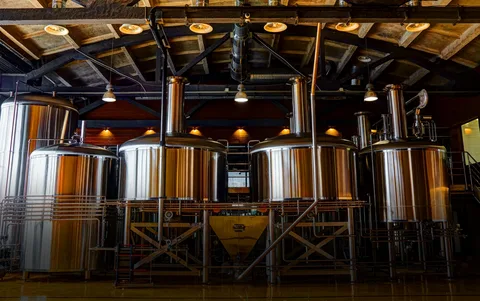brewery market is experiencing a period of transformation, influenced by shifting consumer preferences, economic factors, and emerging trends. According to a report by Market Research Future, the market was valued at USD 664.09 billion in 2022 and is projected to reach USD 800.0 billion by 2032, growing at a compound annual growth rate (CAGR) of 1.88% during the forecast period of 2024 to 2032.
Brewery Market Size was estimated at 664.09 (USD Billion) in 2022. The Brewery Industry is expected to grow from 676.57(USD Billion) in 2023 to 800.0 (USD Billion) by 2032. The Brewery Market CAGR (growth rate) is expected to be around 1.88% during the forecast period (2024 - 2032).
Key Players:
China Resources Snow Breweries, SABMiller, Diageo, Asahi Group Holdings, Kirin Holdings Company, Boston Beer Company, Carter Lager, AnheuserBusch InBev, AB InBev, Carlsberg Group, Constellation Brands, Heineken, Tsingtao Brewery Group, Molson Coors Beverage Company
Consumer Preferences and Market Dynamics
A significant driver of this growth is the increasing consumer preference for craft beers. Consumers are gravitating towards unique flavors and artisanal brewing methods, leading to a surge in the popularity of craft breweries. This shift indicates a move away from mass-produced beers to more specialized, locally produced options.
However, the industry faces challenges as well. In regions like Colorado, the beer industry is adapting to younger, health-conscious consumers who are showing interest in alternatives such as seltzers and canned cocktails. This trend has prompted breweries to innovate and diversify their product offerings to remain competitive.
Economic Impact and Industry Challenges
The brewery sector has a substantial economic impact. For instance, Colorado's craft breweries contribute approximately $2.6 billion annually. Despite this, the industry is navigating challenges including market saturation and evolving consumer behaviors. Notably, in 2024, more craft breweries closed than opened for the first time since 2005, highlighting the competitive and mature nature of the market.
Additionally, global economic pressures, such as inflation and increased competition, have affected major brewing companies. Analysts have observed declining demand in key markets, leading to cautious outlooks for large beer brands.
Innovation and Diversification
To address these challenges, breweries are diversifying their product lines. The rise of nonalcoholic beers is a notable trend, catering to health-conscious consumers seeking alternatives. For example, Go Brewing in Naperville, Illinois, has gained popularity by focusing on high-quality nonalcoholic beers, reflecting a broader industry movement towards inclusivity and health awareness.
Furthermore, breweries are expanding their portfolios to include spirits, food services, and unique onsite events to enhance customer engagement and create additional revenue streams. This strategy aims to attract a broader customer base and adapt to changing market demands.
Grab More Report:
Europe Beer Market Research Report Forecast Till 2032
United States Cocoa and Chocolate Market Forecast Till 2034
Food Pathogen Testing Market Research Report
Tomato Processing Market Research Forecast Till 2032
Europe Mushroom Market Research Forecast Till 2034
